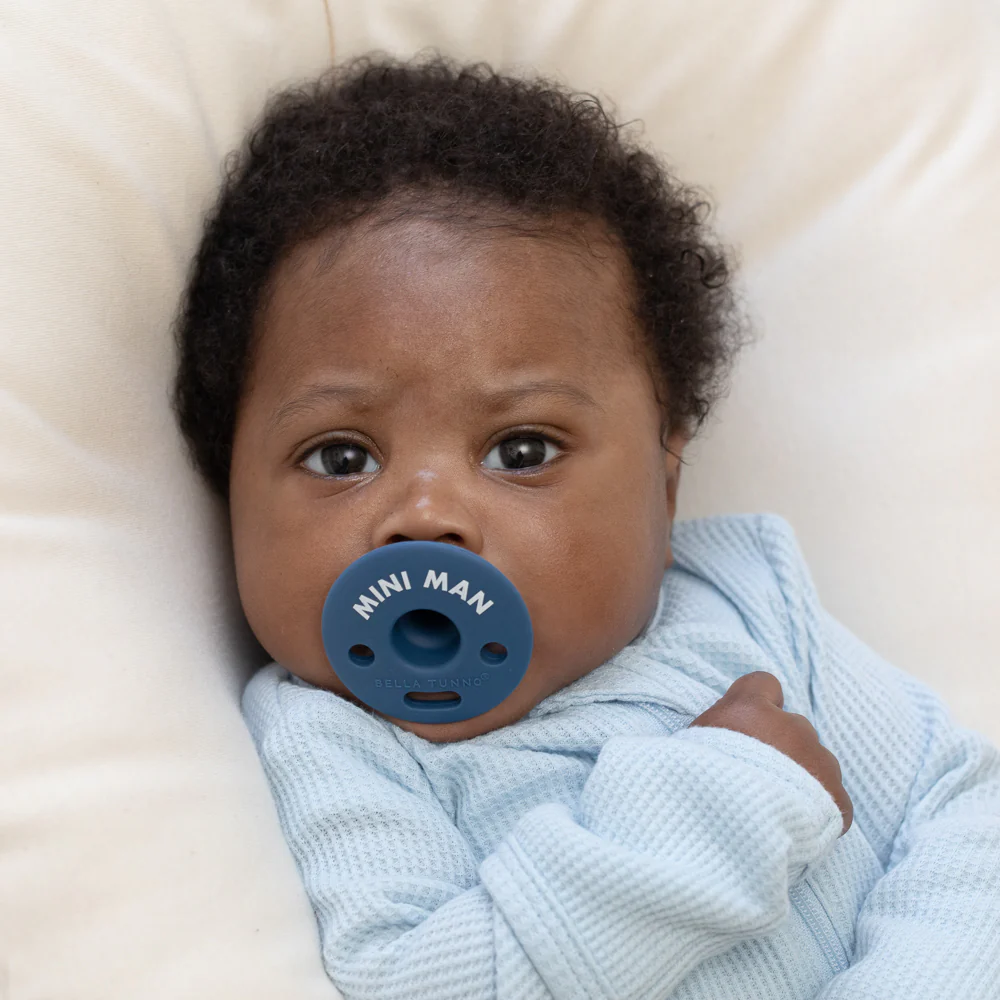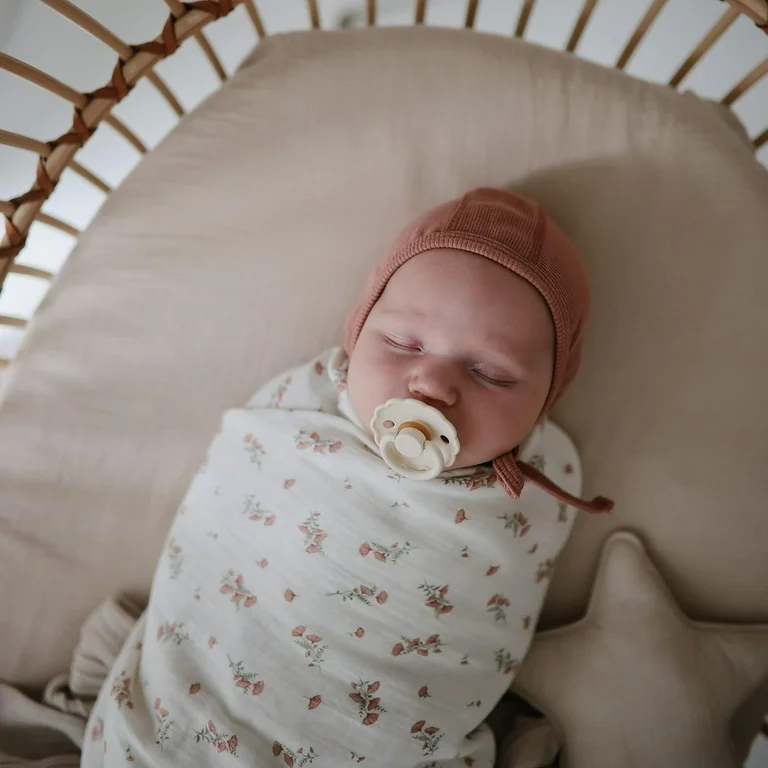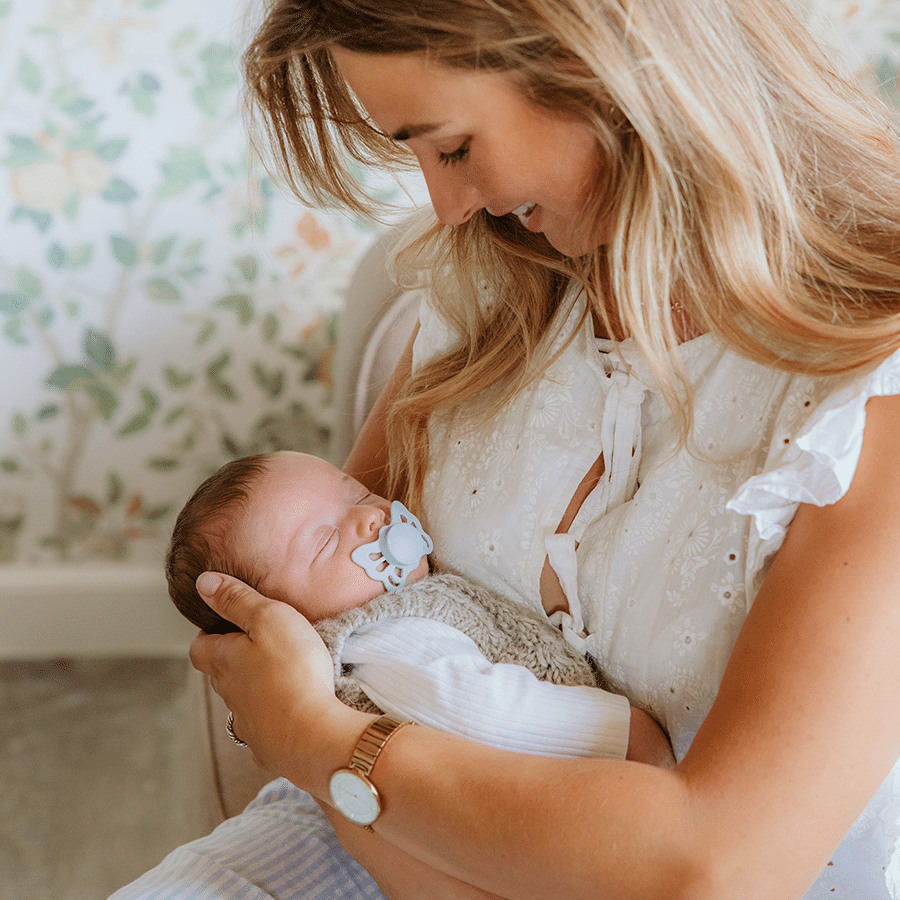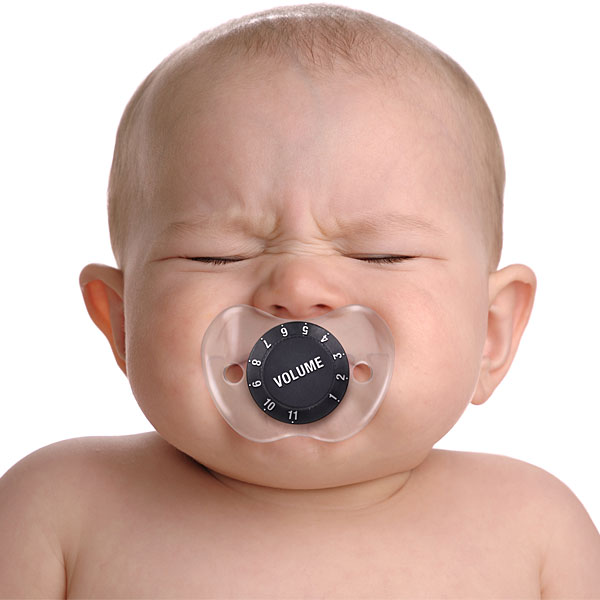What is a Pacifier and How Does it Work?
A baby pacifier, also known as a soother or dummy, is a silicone, latex, or rubber nipple that a baby can suck on. It has a mouth shield and a handle. The design ensures that the nipple stays in the baby’s mouth and is not swallowed.
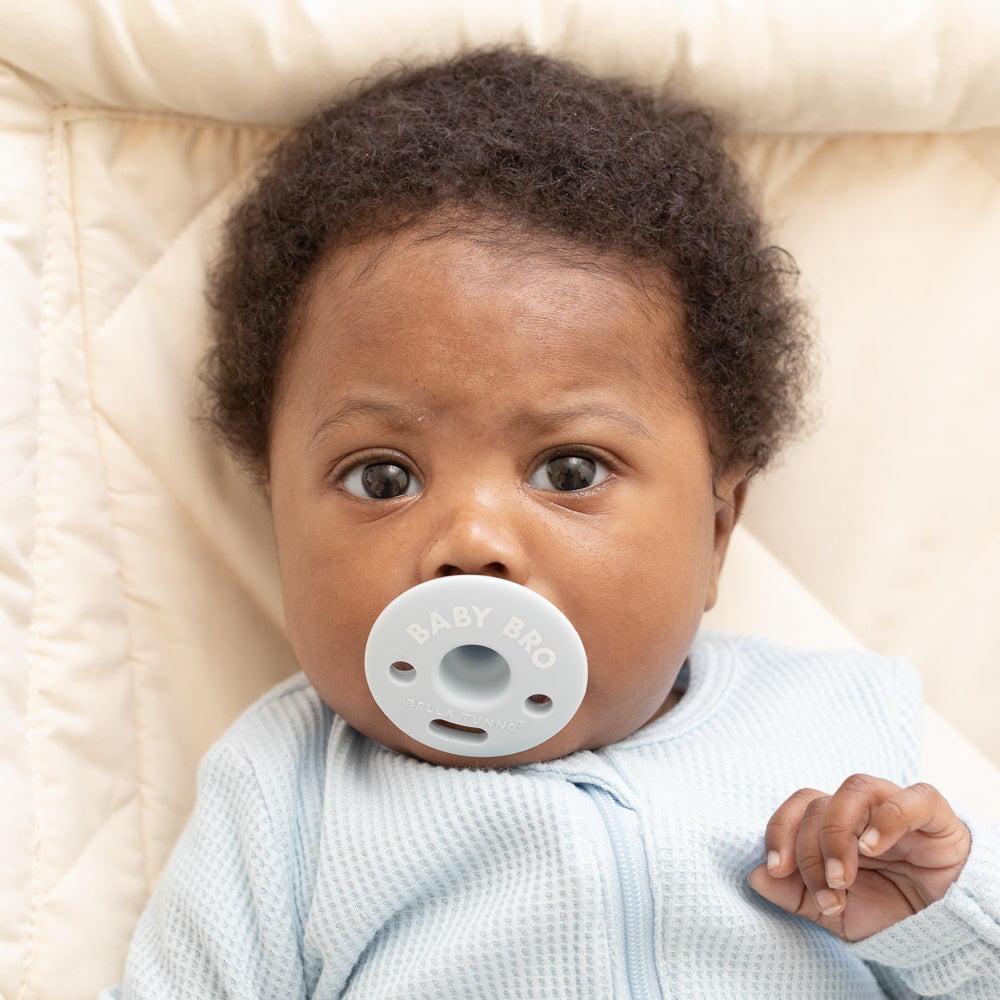
Pacifiers work by satisfying a baby’s natural sucking reflex. This reflex is key for feeding and plays a vital role in self-soothing for infants. When babies suck on a pacifier, it can calm them because the action is similar to what they experience during breastfeeding or bottle feeding.
The sucking motion on a pacifier can provide a sense of security and comfort to babies, which is why pacifiers are frequently used to help settle a baby when they are fussy or trying to sleep. Additionally, for premature babies or those with medical conditions, pacifiers can sometimes be used to encourage the sucking reflex, supporting their ability to feed.
Importantly, pacifiers are designed to mimic the nipple’s shape during breastfeeding, which is why a proper latch is critical. This means that parents need to ensure the pacifier they choose resembles the mother’s nipple to avoid nipple confusion, especially if the baby is breastfed. In terms of function, a pacifier can also aid in the management of pain and stress for infants during procedures and in situations where ear discomfort is possible, like during air travel.
The Benefits of Pacifiers for Babies
Pacifiers provide several benefits that can help both babies and parents. Understanding these advantages can help you decide if pacifiers are right for your child.
Soothing and Calming Effects
Babies have a natural need to suck, even when not feeding. Pacifiers meet this need, which can calm and soothe them. When a baby is fussy, a pacifier can often help them relax. This is especially helpful between feedings or when trying to put the baby to sleep.
Potential Reduction in SIDS Risk
Research suggests that pacifiers may reduce the risk of SIDS (Sudden Infant Death Syndrome). Offering a baby a pacifier during nap time and bedtime could provide a layer of protection. However, it is important to only introduce the pacifier after breastfeeding routines are well established.
Use During Medical Procedures and Flights
Medical visits can be stressful for infants. A pacifier can help distract and ease their discomfort during shots or other procedures. Air travel causes pressure changes that can hurt a baby’s ears. Sucking on a pacifier can help relieve this ear discomfort during flights.
The Downsides of Pacifier Use
While pacifiers have their advantages, they come with certain disadvantages. It’s important for parents to weigh these alongside the benefits when considering pacifier use for their infants.
Dependency and Middle-of-the-Night Crying
Pacifiers can lead to dependency, which is a concern for some parents. A baby may cry when the pacifier falls out at night. This can disrupt sleep for both the baby and parents. Breaking this habit as the child grows older can also pose challenges.
Risk of Middle Ear Infections
Some studies suggest that pacifier use could increase the risk of middle ear infections. This risk is particularly relevant in children older than six months, when ear infections are more common.
Dental Issues and Prolonged Usage
Extended use of pacifiers can affect a child’s teeth alignment and dental health. It is crucial to limit pacifier use as the child grows to avoid these issues.
Breastfeeding Considerations and Potential Disruption
For breastfeeding infants, pacifiers may cause nipple confusion if introduced too early. This can potentially disrupt the breastfeeding routine. Experts often recommend waiting until breastfeeding is well established before introducing a pacifier.

Guidelines for Introducing a Pacifier to Your Baby
Introducing a pacifier to your baby is a personal decision. To make it a positive experience, consider these key guidelines:
Timing and Frequency of Usage
- Begin after breastfeeding is set. Wait until your baby is 3-4 weeks old if you’re breastfeeding. This helps prevent nipple confusion.
- Use as needed for soothing. Don’t start with a pacifier for every fuss. Try cuddling or rocking first.
- Avoid long-term continuous use. Offer the pacifier between feedings or for sleep, but not all day.
Choosing the Right Type of Pacifier
- Look for a one-piece design. This reduces choking risks and is easier to clean.
- Select the right size. Pacifiers come in different sizes for various age groups.
- Consider material types like silicone, which is durable and easy to clean, or latex for a softer feel.
- Think about nipple shape. Some mimic the shape of a mother’s breast, which may help with breastfeeding babies.
It’s vital to monitor your baby’s response to the pacifier. If they show signs of resistance or unhappiness, it might not be the right time to introduce it. Remember, every baby is unique, and what works for one might not work for another.
Keeping Your Baby’s Pacifier Clean and Safe
Proper cleaning and maintenance of your baby’s pacifier is vital. It prevents the buildup of germs that could cause illness.
Sterilization methods for Infants
For infants under six months, sterilization is key, as their immune systems are not fully developed. Boil pacifiers or run them through a hot dishwasher cycle to kill germs. Keep several pacifiers on hand so you can rotate them out for cleaning.
Regular Replacement and Safety Checks
Inspect pacifiers regularly for signs of wear and tear. Look for discoloration, tears, or changes in texture. Replace the pacifier every two months or immediately if you notice any damage. Always use pacifiers that match your baby’s age and size to prevent choking risks.
Keep these steps in mind as a part of a routine to ensure your baby’s pacifier remains a safe source of comfort.
Strategies for Weaning Off the Pacifier
As your baby grows, you may decide it’s time to wean them off the pacifier. This process can be challenging, but it’s manageable with the right strategies. Weaning should be gradual to allow your child to adjust without the comfort the pacifier provides. Below are techniques and support options to help both you and your baby during this transition.
Gradual Reduction Techniques
Start by limiting the times your baby can use their pacifier. Use it only during naps and bedtime at first. Slowly reduce the number of daily uses. For instance, you might start by removing the pacifier mid-nap, progressing to offering it only at bedtime. Consider introducing a comfort object, like a small blanket or a stuffed toy, to take the pacifier’s place. Stay consistent in your approach, and be patient as your child adapts.
Another technique is to limit the places where a pacifier can be used, such as only in the crib or bed. This confines the pacifier to the sleep environment and helps the child not to depend on it during the day. Engage your baby with activities to distract them from missing the pacifier. Singing, reading, or playing can be effective distractions.
Lastly, gradual shortening of the pacifier’s nipple or even poking a hole in it can make it less satisfying to suck on, leading to a natural decline in interest. Monitor your child’s reaction to ensure they aren’t frustrated or upset by this change. It can make the pacifier less appealing without forcing a sudden withdrawal.
Support from Healthcare Professionals
If you find weaning off the pacifier challenging, don’t hesitate to seek help. Your pediatrician or a child development specialist can offer personalized advice and strategies appropriate for your baby’s age and temperament. They can provide support and guidance during this period of change.
Your pediatrician might suggest a specific weaning timeline or provide reassurance about the typical challenges that might arise. Sometimes, they can help identify if your baby has a particularly strong attachment to the pacifier and provide targeted strategies to address it. Getting a professional’s perspective can be reassuring and give you the confidence to stick with your weaning plan.
Remember, transitioning away from a pacifier is a significant change for your little one. Approach this with empathy and understanding. Celebrate small victories along the way to encourage both your child and yourself.
Final Thoughts on the Use of Pacifiers
The choice to introduce a baby pacifier lies with you as a parent. It comes with both benefits and drawbacks. Pacifiers can be a great aid for calming your baby and may even reduce the risk of SIDS when used properly. During flights or medical procedures, a pacifier can offer relief for your baby’s discomfort. However, they can also lead to dependency, increased risk of ear infections, possible dental issues, and may interfere with breastfeeding.
As you weigh these pros and cons, remember to introduce a pacifier only after establishing a stable breastfeeding routine, usually around 3-4 weeks of age. Always choose a safe, one-piece pacifier that fits your baby’s age and keep it clean to protect your baby’s health.
When it’s time to wean your baby off the pacifier, do it gradually. Limit its use to sleep time, and seek support from healthcare professionals if needed. Transitioning away from a pacifier is a significant change for your baby, so patience and empathy are crucial.
Ultimately, whether to use a pacifier, and how to manage its use, is a personal decision that should be made with careful consideration of the available information and what feels right for your family.
